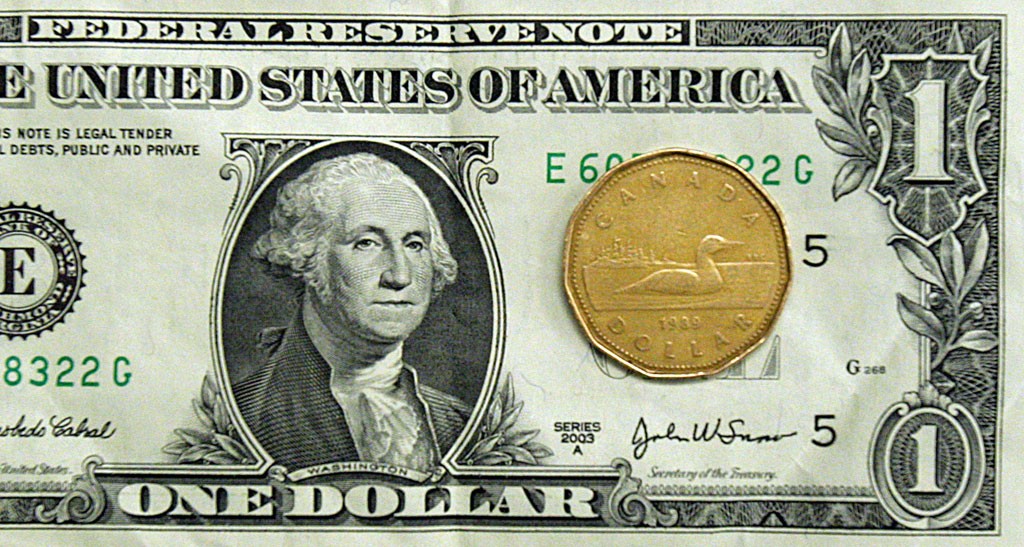Loonie declines amid retreating oil prices
Post on: 15 Апрель, 2015 No Comment

TORONTO — The Canadian dollar closed lower Thursday as the American currency strengthened and oil prices fell.
The loonie was down 0.52 of a U.S. cent to 80.01 cents after having been as low as 79.71 U.S. cents in the morning.
Canada’s dollar plunged amid falling oil prices after an American Petroleum Institute report said U.S. oil inventories increased by 14.3 million barrels last week — far more than estimates of 3.1 million barrels.
However, oil prices bounced off lows after other data from the U.S. Department of Energy showed a buildup of 7.7 million barrels.
Still, rising inventories of crude are bad news since it is a huge supply/demand imbalance that has been responsible for oil prices plunging more than 50 per cent from the highs of mid-2014.
March crude declined 98 cents to US$51.16 after earlier going as low as $49.15.
Investors also focused on the Greek debt drama as the country’s newly elected government formally requested a six-month extension of bailout loans. But there were early indications that it wouldn’t find favour with fellow eurozone countries.
German Finance Ministry spokesman Martin Jaeger said the letter from the new Greek government is not a substantial proposal for a solution and added that it amounts to a request for bridge financing without fulfilling the demands of the (bailout) program.
Elsewhere on the commodity markets, April gold advanced $7.40 to US$1,207.60 an ounce, while March copper was a penny higher at US$2.62 a pound.
The greenback was higher against other currencies after the release Wednesday of minutes from the most recent meeting of the Federal Reserve’s top policy committee which showed the U.S. central bank was in no hurry to raise interest rates.
The minutes reinforced that the committee is data dependent — looking particularly for an improvement in the labour market and stabilization in inflation metrics but. significantly concerned with how to make the shift towards normalizing rates, which could force a delay in rate hikes, observed Camilla Sutton, chief FX strategist, managing director, Scotiabank Global Banking and Markets.
The Fed had been expected by many analysts to start hiking rates later this year, very possibly as early as June. Sutton said that was still a possibility as long as employment growth remains strong and inflation does not fall.














